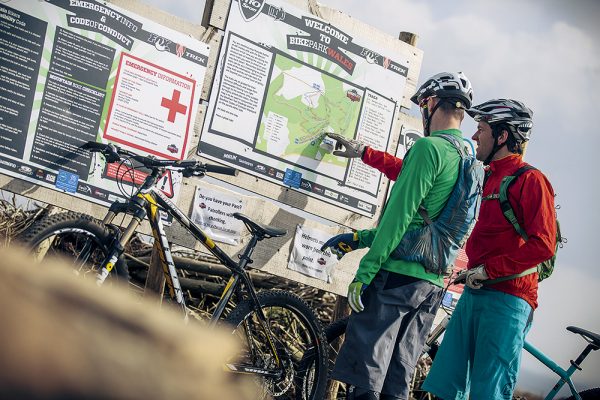Get started on trail centre grading
Red? Blue? Black? Orange? Plus? Q?! Which trail should you ride and what do the new Whistler-style trail centre gradings really mean?
Most sanctioned trails are graded by colour, depending on a mixture of how technically hard they are to ride, and how challenging they are in terms of length or climbing required. The trouble is that grading system is now inconsistent because as mountain biking has changed, so have the boundaries of what constitutes a red, blue, black or green trail.
“As more trail centres opened after Coed y Brenin was built, each generation of trails have got a little spicier,” says Andy Braund, mountain bike ranger for North Wales. “Fly offs crossed the line from rollable to committing and jumps started appearing. Getting airtime became more achievable with better bikes, so trail development has reflected this.”
The mbr guide to trail centre gradings
So how do you tell if a trail is really right for you?
Green
Family trail, not much singletrack, well surfaced, and flat. Expect to be riding fireroads. Best avoided unless you’re with kids or those on gravel bikes or non-mountain bikes.
Blue
Old school blues are often like green grade trails, just with more climbing or distance. But the newer, better blue trails are singletrack-rich, full of flowy corners linked together with berms, but without any drops or technical descents. Check out: Britain’s best blue trails
Red
You need to be fairly fit and technically competent to tackle a red, but if you’ve been riding a few years, have a decent bike and work on your mbr skills then chances are you could give a red trail a go. Expect singletrack descents and the trails to be steeper, faster and with sharper corners than blues. There might be berms to flow round, roots and rocks to float over and drops to send. There could even be woodwork and jumps, although these should be roll-able. Check out: Britain’s best red trails
Black
For skilled and technically good riders. The climbs are going to be much tougher, steeper and longer, and you will probably have to be fit and strong to ride some black trails. The descending is going to be steeper too, faster and potentially rougher than on reds. There might well be jumps and drops that aren’t roll-able and aren’t avoidable, so make sure you’re fine with these skills before riding a black.
Sometimes black sections crop up as optional extras on red routes, where the trail might split into a harder or easier section for a few metres or even a few hundred metres. Check out: Britain’s best black trails
Orange
These markers were first introduced to the UK in Scotland to differentiate the new breed of gravity trails from the old black trails that were graded for length or the amount of climbing you had to tackle. Orange runs are usually found in bike parks and have bigger tables, drops and gap jumps, and they’re steeper and faster. You should ideally be wearing armour and riding a full suspension bike to tackle these.
Trail Qualifiers and Plus trails
Unique to BikePark Wales in the UK, these two new trail gradings are in addition to the usual colour coding grades and were inspired by the Whistler system. A Trail Qualifier is a physical feature near the top of the trail, it’s usually not roll-able and will give you an idea as to whether you an handle what’s to follow. If you push round this Qualifier then the trail isn’t for you. Then the new Plus symbol indicates a trail that has lots more airborne sections than normal for that grade of trail — so expect drops, tables, gaps.
“This may be a blueprint for any future overhaul of the grading system, or perhaps just useful for bikeparks, keeping the simpler system for more traditional trail centres,” Andy says, of the future of grading.
Need to know
A trail in Scotland or Wales will generally be more technically challenging than the same colour grade in the South of England. Check out the terrain you’ll be riding with a critical eye and work out how steep it’s likely to be, what the hills are made from, how rocky it is and how high and exposed it is. Most importantly though, only you can assess if a trail is right for your ability.
“Some centres have a warm up or skills area with examples of their trails,” Andy says. “At CyB we regularly send riders new to the site, up to the ‘Singletrack Zone’ in the Ffowndri skills area so they can clearly see the difference between a green, blue, red & black grade trail at Coed y Brenin.”




